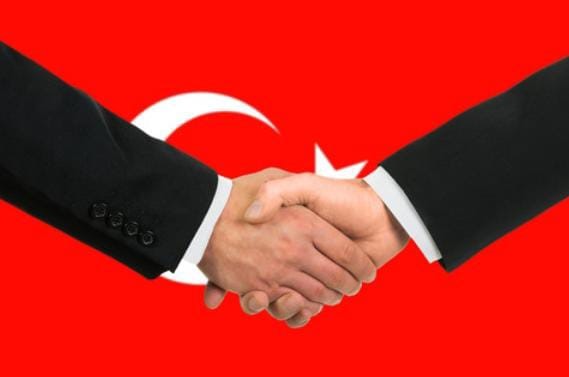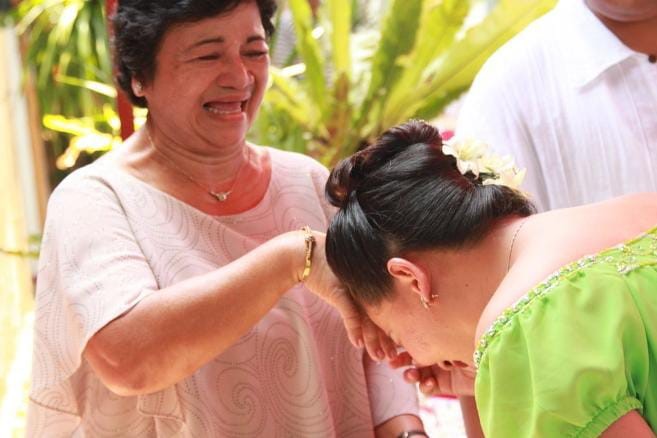Southern Europe is home to 16 countries. The region has a population of approximately 150 million people. They include Italy, Spain, Greece, Portugal, Serbia, Croatia, Bosnia and Herzegovina, Albania, Slovenia, North Macedonia, Montenegro, Malta, Andorra, San Marino Gibraltar, and Holy See.
Holy See is the smallest country in the region, with a population of 520. It can also be referred to as Vatican City.

Historically, the region is renowned for its contributions to human history. It has a lasting legacy, including the birthplace of Western philosophy, the Roman Empire, the Renaissance, and the Age of Exploration. This rich historical backdrop has left an indelible mark on Southern European customs and traditions, including greetings. The region is also home to many ethnic groups, such as the Basques, Catalans, Sicilians, Sardinians, and many more, adding to the region’s cultural vibrancy.
Religion plays a critical role in Southern Europe, with Christianity: Catholicism, and Orthodox influencing daily life, art, and social interactions. The presence of diverse religious practices adds depth and complexity to the region’s greetings, reflecting its inhabitants inhabitants’ spiritual and. In this article, we embark on a journey to explore the intricate world of Southern European greetings, shedding light on their role in preserving and celebrating cultural diversity.
Understanding Southern European Greetings
Southern Europeans emphasize personal connections and establishing rapport, and greetings provide a platform for these interactions.
The Importance of Greetings in Southern Europe
In Southern Europe, greetings hold a special place in society. They are seen as a way to show respect, establish trust, and acknowledge the presence of others. Greetings are regarded as an indication of one’s character, social standing, and upbringing. Individuals are taught the importance of greeting others with warmth and sincerity from a young age, creating a favorable impression.
Moreover, greetings in Southern Europe are wider than mere pleasantries. They are an opportunity to inquire about the well-being of family members, friends, and acquaintances. This practice fosters a sense of community and strengthens social bonds.
Furthermore, greetings are not confined to formal settings. In Southern Europe, greeting neighbors, shopkeepers, and even strangers on the street is customary. This inclusivity and warmth contribute to the vibrant and lively atmosphere that characterizes the region.
Different Greetings Across Southern Europe
While greetings share a common purpose, there are notable differences across Southern Europe.
Italy
Italians greet each other with a firm handshake and direct eye contact to convey respect and sincerity. They believe that a firm grip demonstrates confidence and trustworthiness. It is also customary to address individuals using their titles, such as “Signore” or “Signora,” to show respect.

Spain
A friendly embrace or kiss on each cheek is customary in Spain. This warm and affectionate greeting is known as “el beso” or “la dos besos.” It is important to note that the number of kisses may vary depending on the region, with some areas opting for three kisses instead of two. This gesture symbolizes friendship and closeness.

Greece
The Greeks prefer a warm hug accompanied by a heartfelt greeting. This embrace, known as “filaki,” is a common way to greet friends and loved ones. Greeks believe physical touch is a powerful way to connect with others and convey genuine care and affection.

The Role of Greetings in Cultural Identity
Greetings are a powerful tool for shaping and maintaining Southern Europe’s cultural identity. They are deeply ingrained in the traditions and customs of the region, acting as a vehicle for transmitting cultural values from one generation to the next.
Greetings as a Reflection of Cultural Values
The way greetings are exchanged in Southern Europe reveals much about the cultural values of its people. Respect for elders, close-knit family structures, and a strong sense of community are all reflected in the warmth and sincerity offered by greetings. Such values form the foundation of Southern European societies and contribute to their unique identity.
When two individuals meet in Southern Europe, it is not just about saying “hello” and moving on. Greetings are an opportunity to show respect and acknowledge the other person’s presence. In many Southern European countries, greeting someone with a kiss on both cheeks is customary, symbolizing warmth and familiarity. This physical contact is not seen as intrusive but rather as a way of expressing closeness and connection.
Furthermore, greetings in Southern Europe often involve asking about the well-being of the other person and their family members. This reflects the importance placed on family and community ties. By inquiring about the welfare of loved ones, individuals demonstrate their genuine interest in the lives of others and their commitment to maintaining strong social bonds.
How Greetings Foster Community in Southern Europe
Greetings are vital in fostering a sense of community in Southern Europe. Every encounter, whether with a neighbor, a shopkeeper, or a close friend, is an opportunity to build and strengthen social bonds. Greetings are the starting point for conversations, enabling individuals to connect, share stories, and develop lasting relationships. Through these daily interactions, the fabric of the community is woven, preserving the social fabric of Southern European societies.
In Southern European countries, greetings go beyond formal occasions or special events. They are part of everyday life, woven into the fabric of society. Whether it is a simple “Buenos días” in Spain, “Buongiorno” in Italy, or “Kalimera” in Greece, greetings are a way of acknowledging the presence of others and fostering a sense of belonging.
Moreover, greetings in Southern Europe often extend beyond mere words. Gestures accompany them, such as a warm smile, a firm handshake, or a back pat. These non-verbal enhance the sense of connection and create a welcoming atmosphere. Individuals demonstrate their openness and willingness to engage with others by engaging in these gestures, reinforcing community bonds.
It is worth noting that Southern European greetings are not rushed or superficial. They are given the time and attention they deserve, allowing individuals to connect genuinely. This emphasis on genuine interaction sets the stage for meaningful conversations and exchanging ideas, contributing to the region’s rich cultural tapestry.
The Influence of Southern European Greetings on Global Culture
Southern European greetings have transcended their regional boundaries and significantly impacted the global cultural landscape. As people from different parts of the world connect and interact, they bring their cultural greetings influenced by Southern European practices.
The Spread of Southern European Greetings
Globalization, travel, and cross-cultural exchanges have spread Southern European greetings to other parts of the world. As individuals learn about and appreciate different cultures’ customs, they incorporate Southern European greetings into their daily lives. This spread enriches cultural diversity and fosters understanding and mutual respect among people from diverse backgrounds.
The Impact of Southern European Greetings on International Etiquette
The influence of Southern European greetings on international etiquette cannot be understated. As the world becomes more interconnected, understanding and respecting cultural norms in greetings has become essential in business, tourism, and diplomacy. The warmth and sincerity of Southern European greetings have set a standard for courteous and respectful behavior, contributing to a harmonious global society.
The Contribution of Greetings to Cultural Diversity
Greetings reflect cultural diversity and play an active role in promoting and preserving it. By greeting one another, individuals celebrate their cultural identities and embrace diversity.
Greetings as a Form of Cultural Expression
Greetings serve as cultural expression, allowing individuals to showcase their unique traditions, customs, and values. By preserving and passing down these greetings, communities ensure the continuity and vitality of their cultural heritage.
The Role of Greetings in Promoting Cultural Diversity
Greetings bridge cultural divides by promoting understanding, accepting, and appreciating diverse traditions. When individuals from different cultures exchange greetings, they open doors to cross-cultural communication, fostering an environment of inclusivity and respect. This interplay of greetings contributes to the vibrancy of cultural diversity worldwide.
The Future of Southern European Greetings
As we look towards the future, we can expect the evolution of Southern European greetings in response to changing societal dynamics and the impact of globalization.
The Evolution of Greetings in the Modern Age
In an increasingly digital and fast-paced world, the way greetings are exchanged is evolving. Virtual platforms and social media have altered the landscape, providing new opportunities for connecting and greeting one another. Southern European greetings are adapting to these changes, finding ways to translate the warmth and sincerity of traditional greetings into the digital realm.
Preserving Traditional Greetings in a Globalized World
While embracing change, preserving the traditional greetings that form a valuable part of Southern European cultural heritage is also essential. Efforts to document, promote, and teach these greetings ensure survival in a rapidly globalizing world while promoting ongoing cultural diversity.
Conclusion
Southern European greetings embody the spirit of cultural diversity and contribute to its flourishing. Understanding the significance of these greetings within the region and globally allows us to appreciate and celebrate the richness they bring to our interconnected world.




